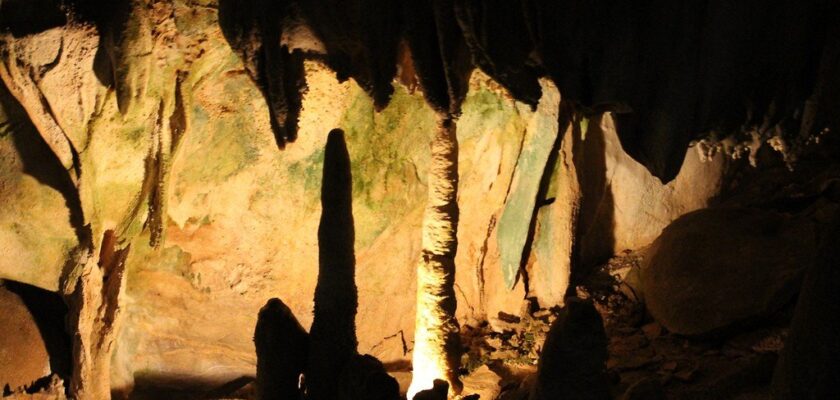Marble Cave in Crimea
Marble Cave in Crimea is a unique underground labyrinth formed as a result of karst processes in the lower part of the Chatyr-Dag mountain massif. The branched network of underground tunnels has gained popularity among tourists, thanks to numerous natelic-drop formations. Stalactite figures of bizarre shapes and all sorts of sizes turned an ordinary at first glance underground into a fantastic fairy-tale setting.
.
Today, Marble Cave is among the top 5 most beautiful caves in the world and is one of the most visited natural sites of its kind.
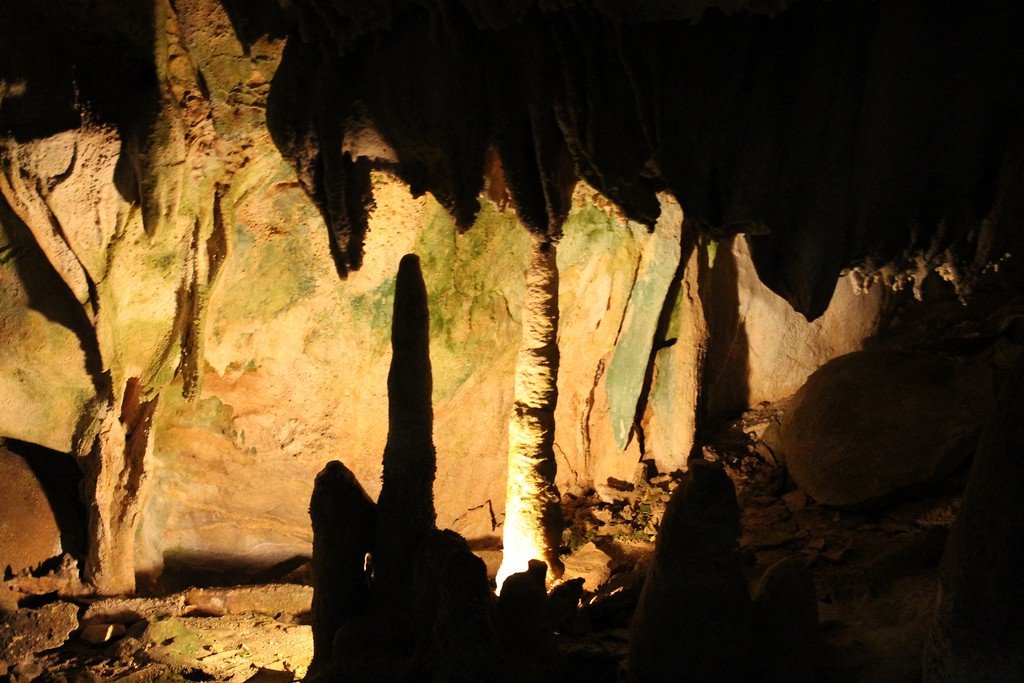
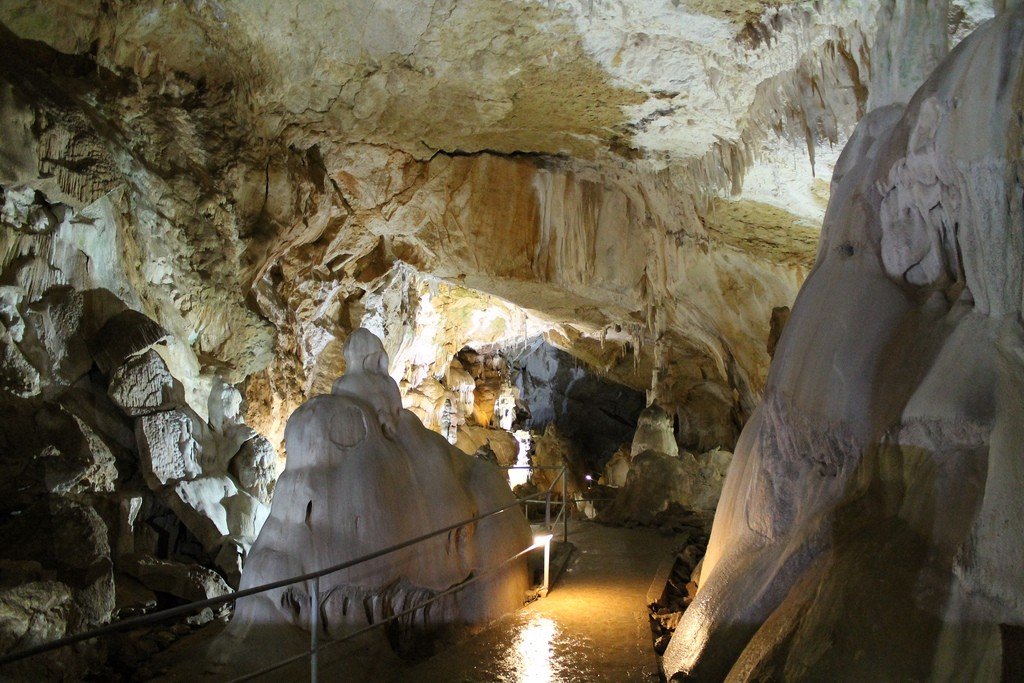
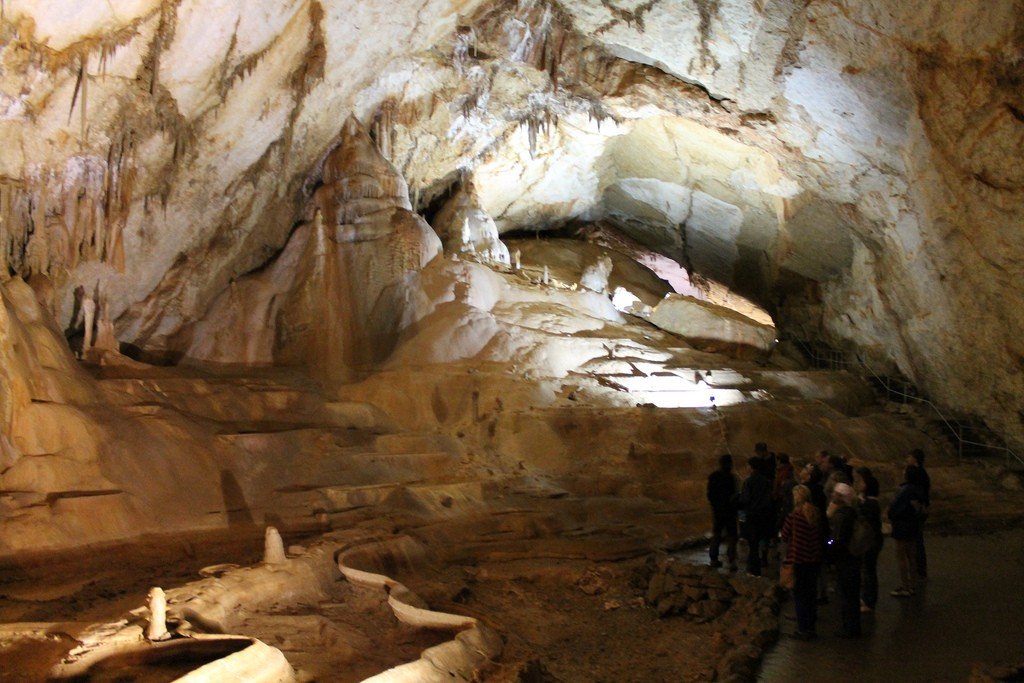
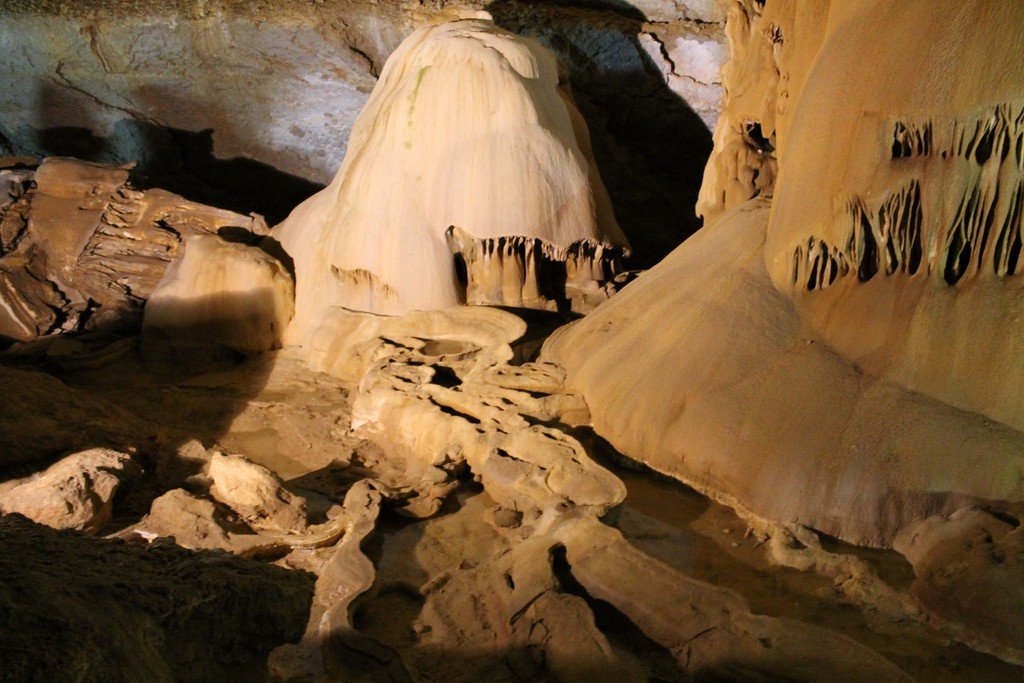
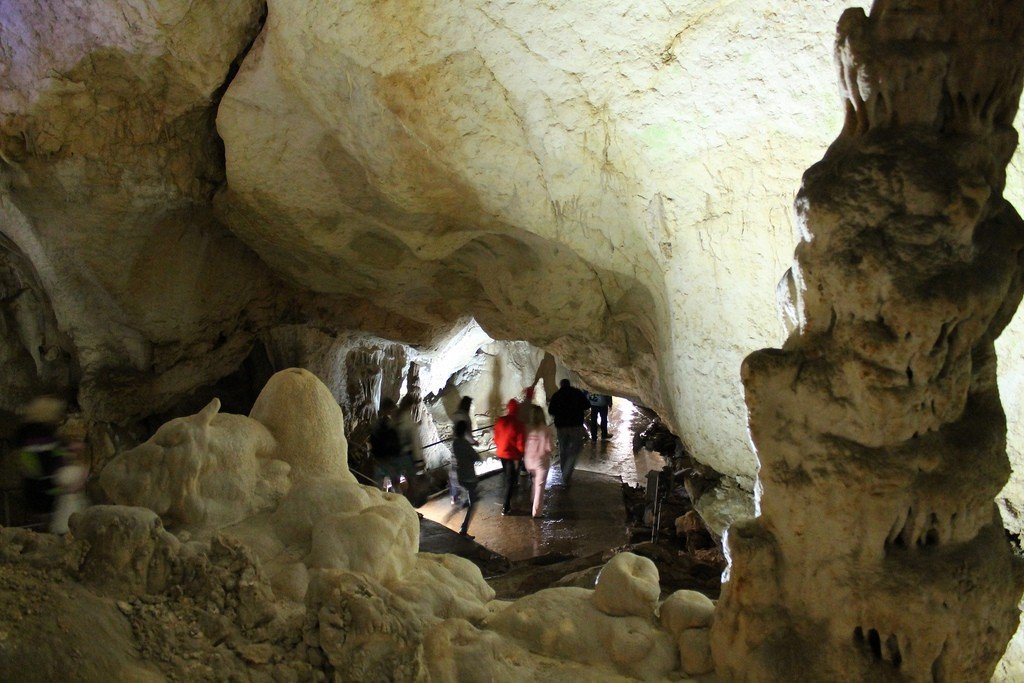
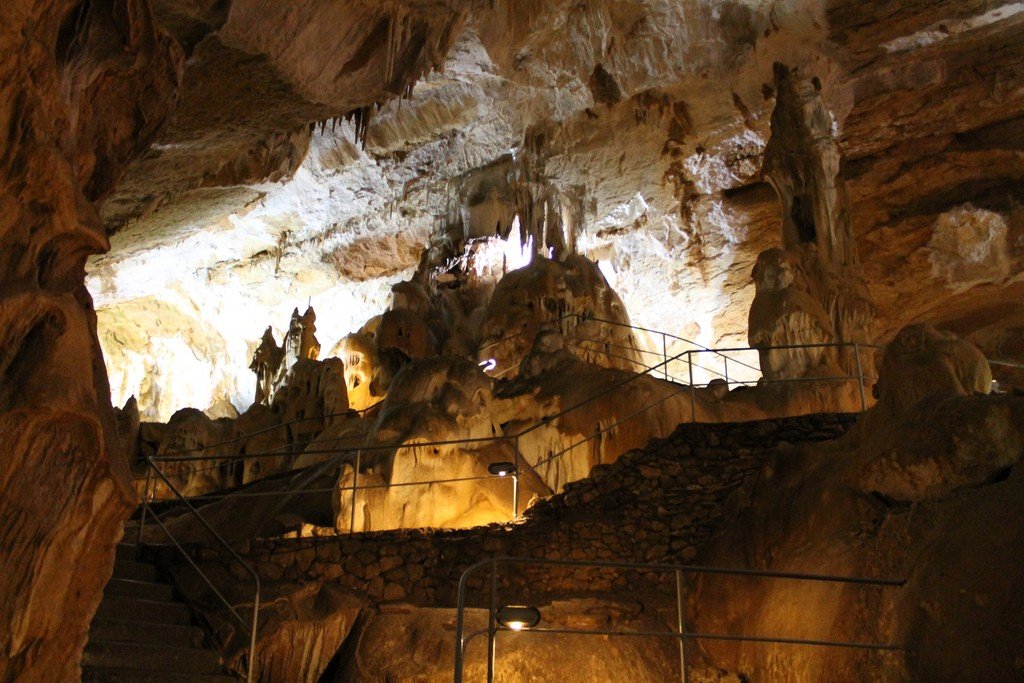
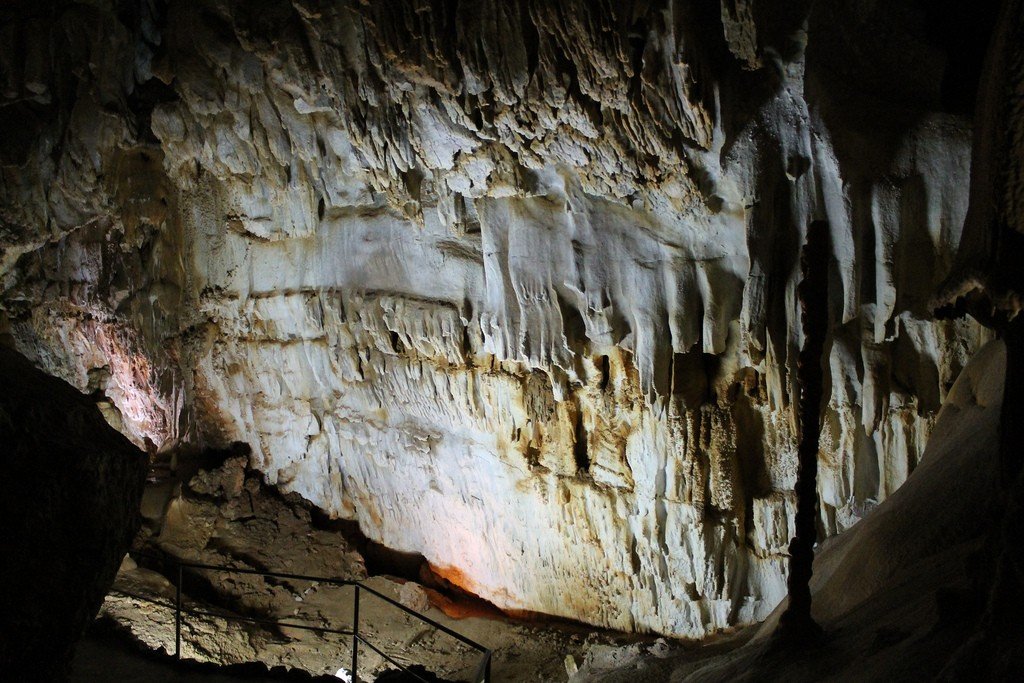
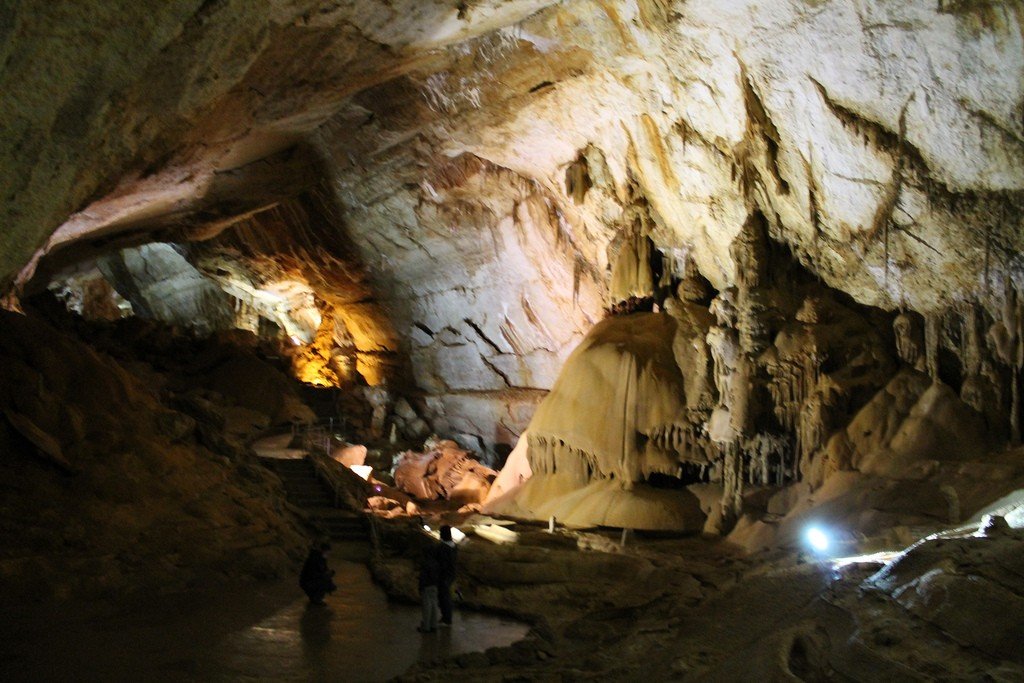
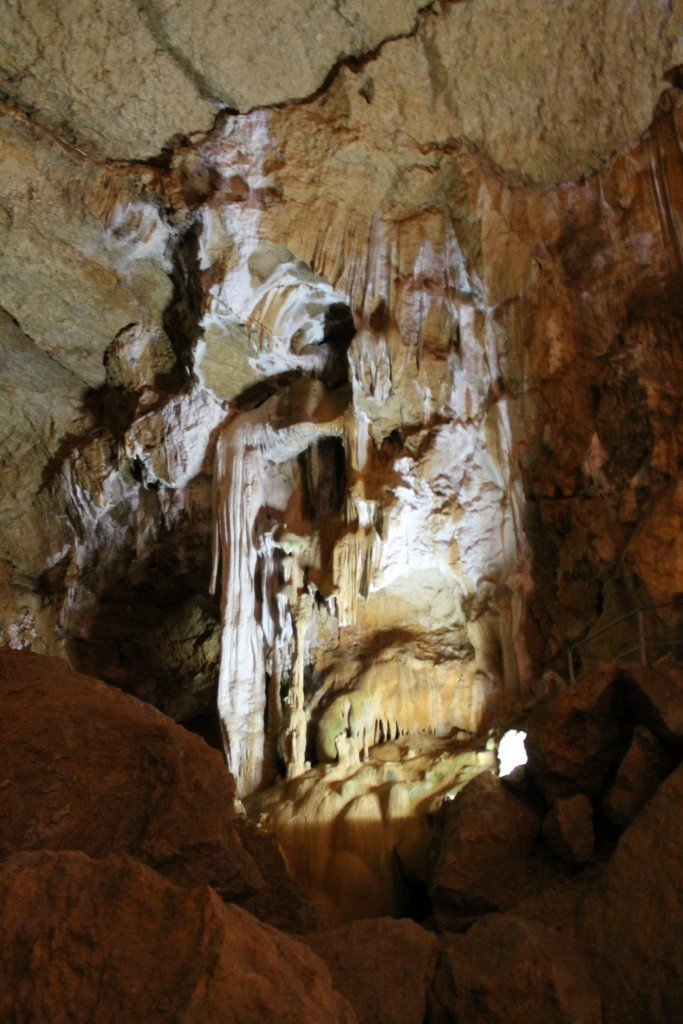
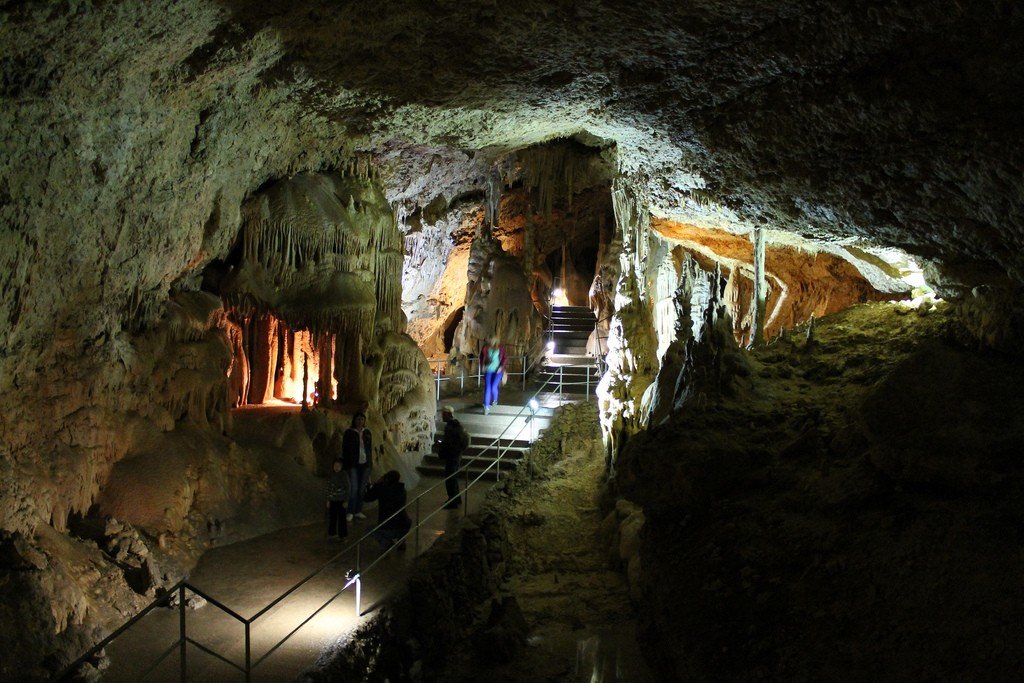
- History of the discovery of Marble Cave
- In the realm of the underground king
- The Lower Gallery: Entertainment not for everyone
- What a tourist needs to know when descending into Marble Cave
- How to get there
History of the discovery of Marble Cave
The unusual cave with a complex system of passages and internal chambers was discovered by accident in 1987. The underground labyrinth was located at an altitude of 920 meters above sea level, in the neighborhood of Suuk-Koba and Bin-Bash-Koba caves. “Marble” cave was christened by the participants of speleosection, who found the entrance to the fabulous dungeon, but for some time was used and another version of the name – “Afghanka.”
.
By 1989 the place was open to visitors. Electricity was brought into Marble Cave, and some parts of the cave were equipped with concrete paths, viewing platforms and comfortable handrails for descent. In addition, several hiking trails have been developed that can be traversed without training or equipment.
.In the Realm of the Underground King
Since the discovery of the Marble Cave until today, no more than 2 km of the underground corridor has been explored. This relatively small area contains 13 vast cavities, called “halls”:
- Clay;
- Palace Hall; .
- Rebuild Hall; .
- Pink; .
- Tiger Walk; .
- Storytelling Gallery;
- Fairy Tale Gallery;Balcony Room;
- Balcony Room;Hall of Hope;
- Hall of Hopes;Chandelier Room;
- Luster Room;The Riverbed;
- The Riverbed.
- Landslide; .
- Chocolate; .
- Helictic;
- Helictic.
About 1.5 kilometers of cave passages have been equipped for visits and excursions so far. You can walk through the Marble Cave as part of any of the 4 standard tourist routes, the shortest of which lasts only 30 minutes. Thrill seekers can choose a more “pumped up” version of the tour, which includes a short briefing and a descent to the lower levels of the labyrinth.
.It is customary to start the standard Marble Cave detour with the Fairy Tale Gallery. The concrete paths inside the chamber loop between stalactites resembling fairy tale characters. Closer to the entrance, guests are greeted by a huge calcite pillar that resembles the outline of the frowning guardian of the underground kingdom. Speleologists call the stalagmite “master” and claim that the stern guardian is extremely resentful and does not tolerate disrespectful treatment.
.
From the Gallery of Fairy Tales it is not far to the Tiger’s Passage. The remains of a prehistoric animal, presumably a saber-toothed tiger, were once found in this part of the labyrinth. The passage was immediately dubbed “Tiger passage”, although some time later it turned out that the skeleton fragments belonged to a cave lion. They did not correct the mistake, as in all documents the place already appeared under the first name.
.
The main attraction of the Tiger Passage are numerous crystals of helictites, in the shape of flowers. The vaults here are considerably lower than in the Fairy Tale Gallery, which makes it possible to admire the natelic formations up close. By the way, the passage itself is one and a half million years older than the other halls of the Marble Cave. As a result of the collapse of the vaults, it was possible to find it only a year after the discovery of all the underground chambers.
.The largest of all the halls of the cave is the Hall of Rebuilding, which is about 250 meters long and at least 28 meters high. The eastern part of the wall of the underground entrance hall is covered with elegant corralite “inflorescences”, and miniature lakes filled with calcite pearls glisten on the stone floor slabs. Passing under the fantastic vaults of the hall, pay attention to the 7-meter stalagmite lying here, called “The Fallen Tower”. Another unusual section of the dungeon is the Palace Hall, which is usually visited because of the “King” and “Queen” – giant nathetic-drop formations surrounded by countless stalagmites.
.Lower gallery: entertainment not for everyone
The Marble Cave consists of an upper and a lower gallery. And if everyone can walk along the first one, the second one is intended for exclusive speleotours, which usually start from the Collapse Hall. The descent along the winding path between the stone blocks and assorted “icicles” finally leads to the Pink Hall. Here you can gaze at the marvelous creations of karst transformation, such as the molten draperies of the walls and stone roses.
.
To get acquainted with the lower part of the Marble Cave takes on average about 2-2.5 hours, during which tourists have time to visit the Balcony Hall and the Hall of Hopes. The final point of the speleotour through the underground kingdom is the Lustrovy Hall, which you have to get to through the stalactite “forest”. The main feature of this room is the colossal “lamps” hanging from the ceiling. Generously decorated with corralites, they form tiered, reaching to the floor, constructions.
.
What a tourist needs to know when descending into Marble Cave
You can visit the Marble Cave every day from 9:00 to 19:00, but you will have to pay for the pleasure. The cost of the entrance ticket varies depending on the type of excursion and the age of visitors. For example, children under 5 can walk through the stalagmite labyrinths for free, and a half-hour trip to the Gallery of Fairy Tales for an adult tourist will cost 350 rubles.
.
Descent into the underground halls is carried out exclusively by organized groups led by a guide. Despite the fact that most of the interior space is illuminated, to show excessive curiosity and independently deviate from the set route is not worth it. It is also not recommended to look into the “offshoots” of the underground corridors. More interesting exhibits than in the equipped halls, you will not find here, but you can get lost and fall into a state of panic.
.
During the tour, do not try to touch calcite crystals and fouling formations with your hands, so as not to destroy the amazing beauty created over thousands of years.
.The average temperature in Marble Cave usually does not rise above +9 °C, and humidity can reach 100%, so it is worth dressing warmly when going for a walk through the underground galleries. If for some reason you didn’t bring your outer clothes, you can rent them right at the entrance to the cave. For only 15 rubles you will be provided with a warm jacket, which will protect you from dampness and cold. Well, if you still managed to get cold, look after the tour in a cozy cafe, located next door, and warm yourself with a cup of hot tea or mulled wine.
.How to get there
The easiest way to get to Marble Cave is to buy a ticket for one of the tour buses that are sold at any Crimean resort. If you have planned a departure from Simferopol, choose public transportation going in the direction of Yalta. To get to your destination, get off at the stop Zarechnoye and go to the neighboring village of Marble. The distance between the villages is no more than 4 km, so this section of the path is not difficult to overcome on foot. From Marble to the cave will have to walk another 8 km, so if you are not ready for such a long walk, try to negotiate with local drivers who will take you to the right place for a fee.
.